iPad Pro (M5) review: More powerful than a MacBook Air, thinner than an iPhone Air
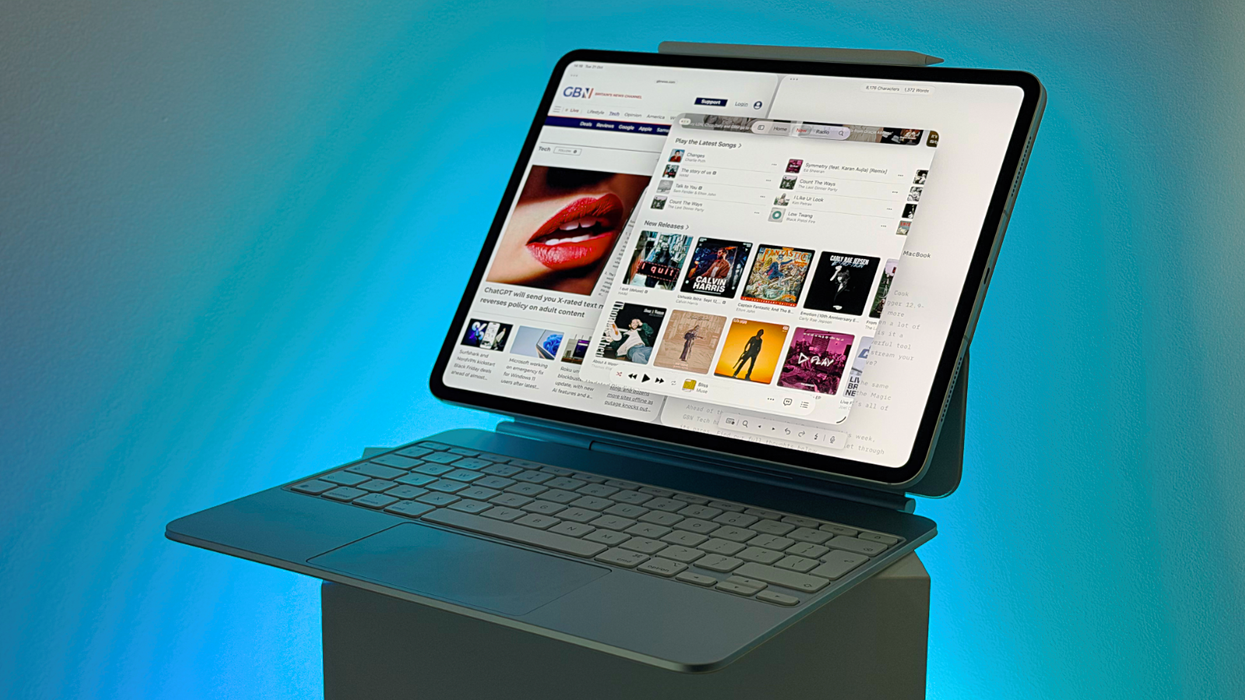
At 5.1mm thin — that's just 0.2 inches, this powerhouse tablet still holds the record for the slimmest device to ever leave Apple's secretive R&D laboratory
|GB NEWS

All products and promotions are independently selected by our experts. To help us provide free impartial advice, we will earn an affiliate commission if you buy something. Click here to learn more
Prices start from £999
Don't Miss
Most Read
Latest
This year marks a decade since Apple CEO Tim Cook introduced the first-ever iPad Pro, bringing a bigger 12.9-inch canvas, Apple Pencil stylus support, and a more powerful processor to the bestselling tablet lineup.
That formula, which remains largely intact to this day, sparked 10 years of chin-stroking about what exactly this device even was — had Apple built a bona fide replacement for your laptop, a powerful tool for digital artists, or the ultimate way to stream your favourite boxsets and blockbusters on the move?
With the all-new Apple M5 system-on-a-chip fitted inside the stunning ultra-slim design introduced last year, not to mention the brilliant Magic Keyboard and Apple Pencil Pro accessories, this new iPad Pro is all of the above.
And so much more.
Ahead of the UK release of the newest iPad Pro tomorrow morning, GBN Tech has been putting this powerhouse tablet through its paces. Here's everything you need to know.
Order the brand-new iPad Pro (M5) on Amazon
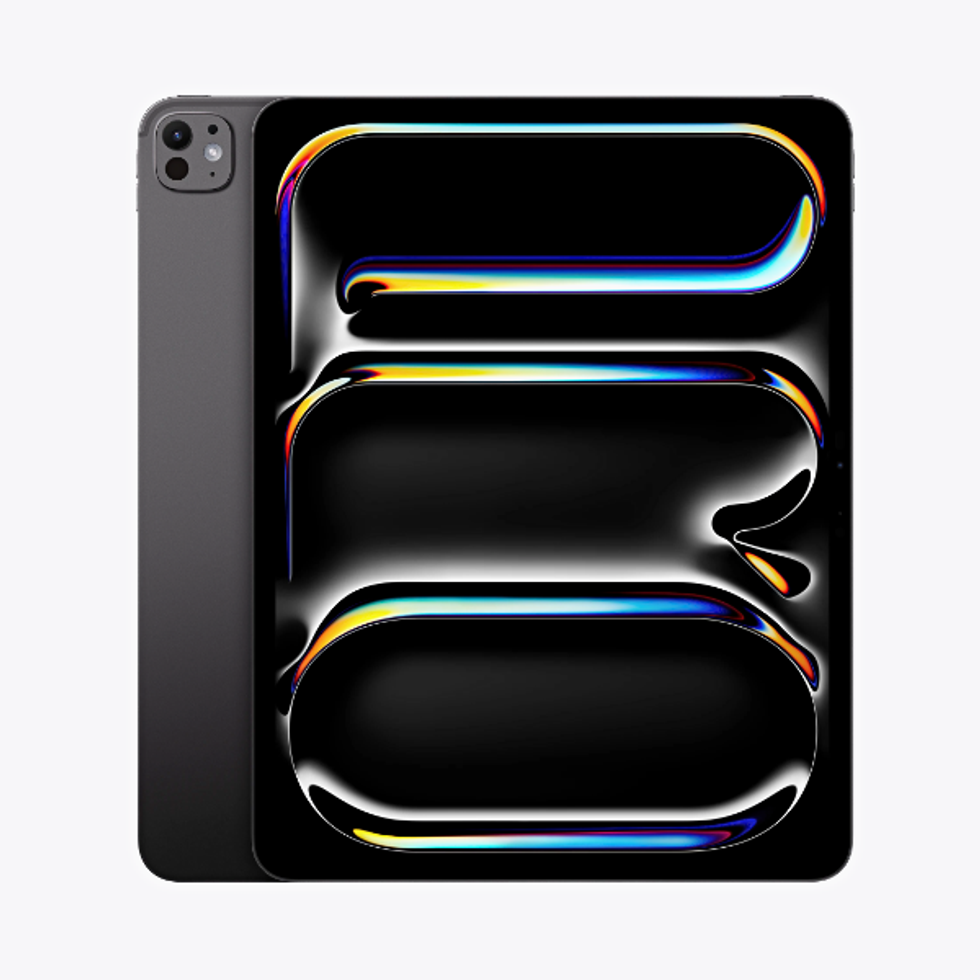
Also available with a larger 12.9-inch Ultra Retina XDR display for £1,299, this new iPad Pro adds a supercharged new M5 system-on-a-chip to the same breathtakingly thin case unveiled last year. At 5.1mm for the 12.9" tablet, this still holds the crown as the thinnest device to ever be released by Apple — beating the iPod nano and the headline-grabbing iPhone Air that launched last month
[stars-4.5]
iPad Pro (M5)
$999
What We Love
iPad Pro is a powerhouse tablet with a stunning screen, svelte design, unparalleled library of apps, and a redesigned operating system that offers the flexibility to truly make this device whatever you need it to be.
That’s the real magic of this new iPad Pro.
The iPad Pro lineup has long offered the ultimate viewing experience when watching blockbusters, boxsets, or live sports on its stunning Ultra Retina XDR display, which sandwiches (granted, not the technical term) two OLED panels together to deliver up to 1,600-nits peak brightness for HDR content as well as the cavernous blanks and vibrant colours this top-tier screen technology is known for.
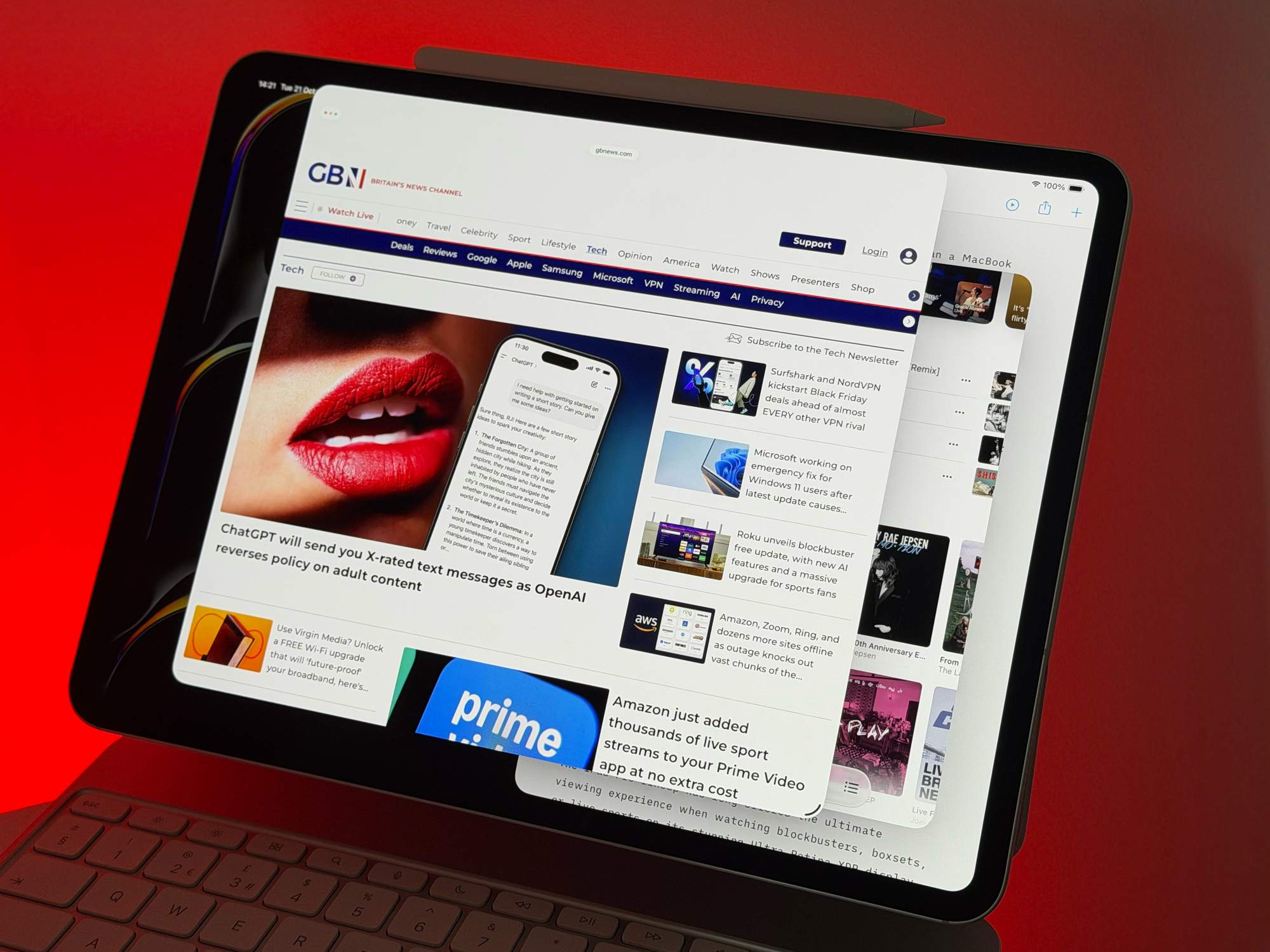
While OLED offers some of the best viewing experiences of any screen technology, it can struggle to achieve the same brightness as Mini-LED or QLED, something that Apple has solved with its innovative "tandem OLED" panel — a world first
|GB NEWS
iPad Pro also supports ProMotion for buttery-smooth animations and fast-paced gameplay at 120Hz, and True Tone, which automatically adjusts the temperature to match your surroundings.
Likewise, there’s nothing new about the incredible Apple Pencil Pro experience, which lets you scrawl handwritten notes, sign PDFs, annotate screenshots, and make stunning digital artwork, thanks to its ludicrously low latency and precision.
Apps like ProCreate let you sketch, draw, or paint with over 300 handcrafted brushes using the Apple Pencil. The level of detail is mind-blowing. For example, hovering the Apple Pencil above the OLED screen, you’ll see a digital shadow that perfectly matches the digital brush, ink pen, or pencil that you’ve picked in the software.
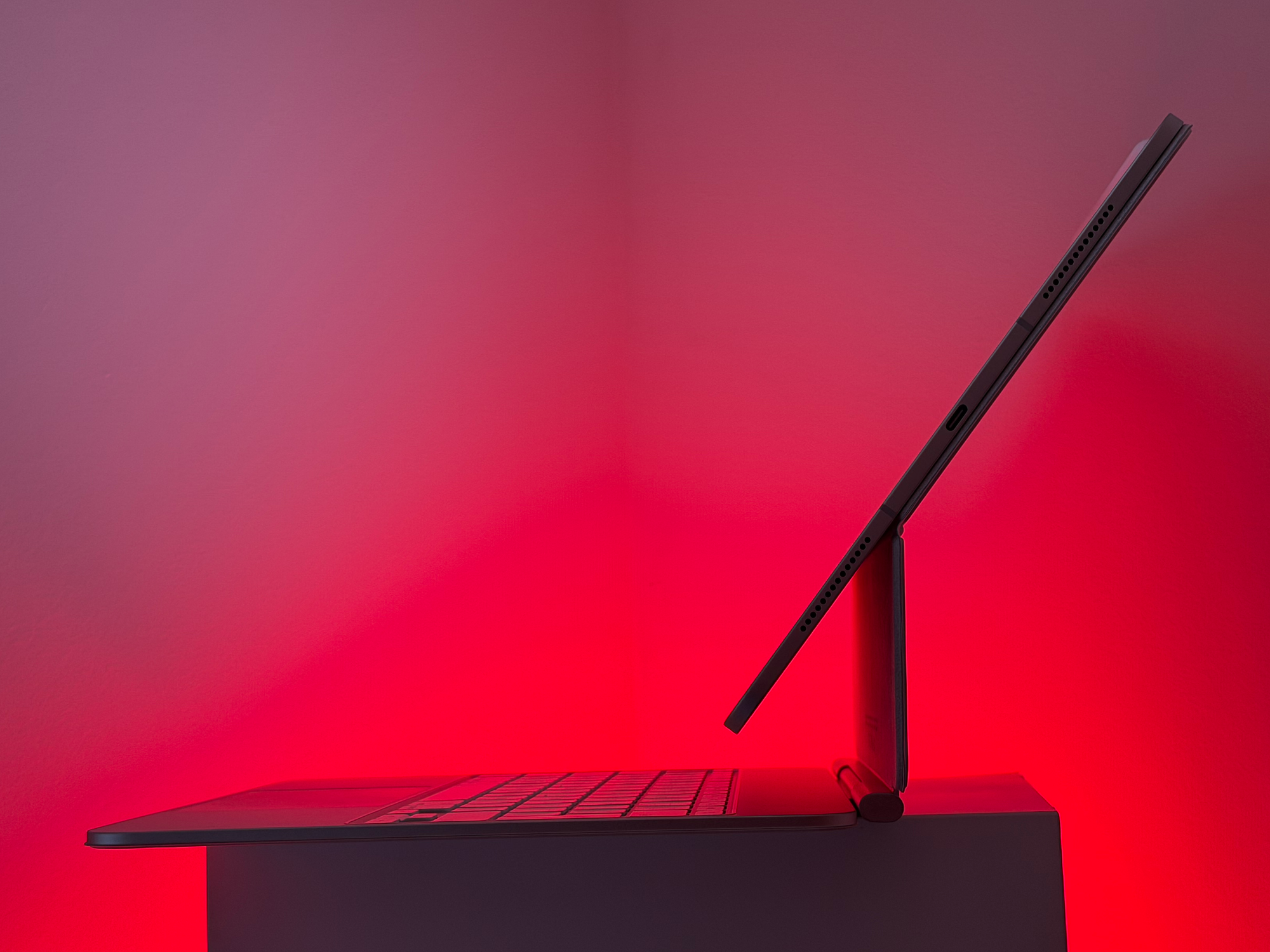
Don't be fooled by the 5.1mm frame; the M5 system-on-a-chip inside this iPad Pro packs as much power as a MacBook Pro launched just two years ago
|GB NEWS
So what is different about this new iPad Pro?
It’s the perfect combination of the supercharged new Apple M5 system-on-a-chip and the dramatic software shake-up introduced with iPadOS 26 earlier this autumn.
M5 is a jaw-dropping sliver of silicon. It lets you edit five 4K ProRes video files on a single timeline, generate Artificial Intelligence (AI) images from scratch 4x faster than an M1-powered iPad Pro, power an external 6K monitor, and unlocks up to 1.6x faster GPU performance for demanding tasks like high-resolution image edits than the M4 released just 12 months ago.
According to benchmark tests, the single-core performance from this system-on-a-chip roughly matches a MacBook Pro with M4 released last autumn, while multi-core is closer to the M3 variant from the previous year. And this is all squeezed inside a device that’s just 5.1mm (0.20-inches) thin.
Yikes.
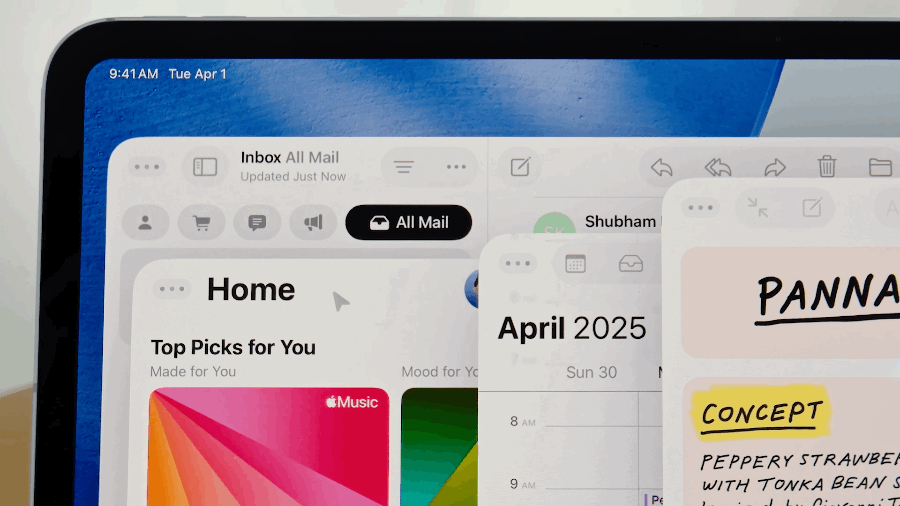 iPadOS 26 brings functionality that you'd typically associate with a traditional laptop or desktop computer, including resizing windows, minimising applications into the Dock, and tiling windows side-by-side | APPLE PRESS OFFICE
iPadOS 26 brings functionality that you'd typically associate with a traditional laptop or desktop computer, including resizing windows, minimising applications into the Dock, and tiling windows side-by-side | APPLE PRESS OFFICE Safe to say, most of us won’t even come close to making the new iPad Pro break into a sweat.
Editing 4K Dolby Vision video shot on iPhone 17 Pro together, while streaming music, and bouncing between dozens of Safari tabs didn’t have any impact on the beastly M5 system-on-a-chip.
But it’s the act of marrying the all-powerful M5 with the latest version of iPadOS 26 is what really makes this device shine.
For those who missed it, the arrival of iPadOS 26 saw Apple let you move, overlay, and resize iPad apps in resizable windows, just like a desktop operating system.
While earlier versions of iPadOS did allow you run a few apps side-by-side, there’s no limit with the newest operating system — you can open every app installed on the tablet at the same time. And the M5 is powerful enough that you literally could.
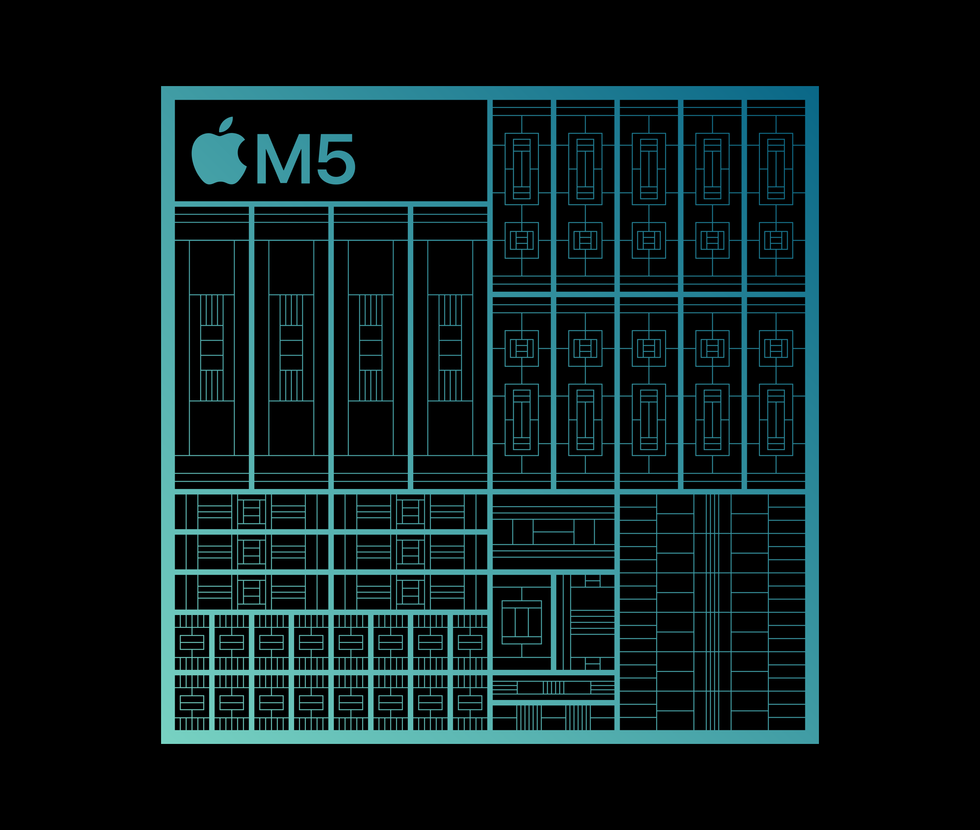
M5 is the latest system-on-a-chip custom-designed by Apple for its laptops, desktop and tablet lineup
|APPLE PRESS OFFICE
iPadOS 26 also introduced background tasks, so long-running processes — like exporting a mammoth video project or downloading a large file — can continue even if you’ve minimised the relevant app to work on something else.
All this means that you can use iPad Pro exactly like a MacBook — resizing and bouncing between dozens of apps, using Spotlight to find and launch files, downloading files in the background, the list goes on.
But unlike a MacBook, you can detach the iPad Pro from the Magic Keyboard and nestle on the sofa with this slimline 579g tablet to watch the latest episode of Slow Horses in stunning 4K HDR on that gorgeous tandem OLED screen or doodle with an Apple Pencil.
Of course, iPadOS is available on every generation of iPad, but it truly shines on the bleeding-edge M5 system-on-a-chip, coupled with the stunning design introduced to the iPad Pro lineup last year.
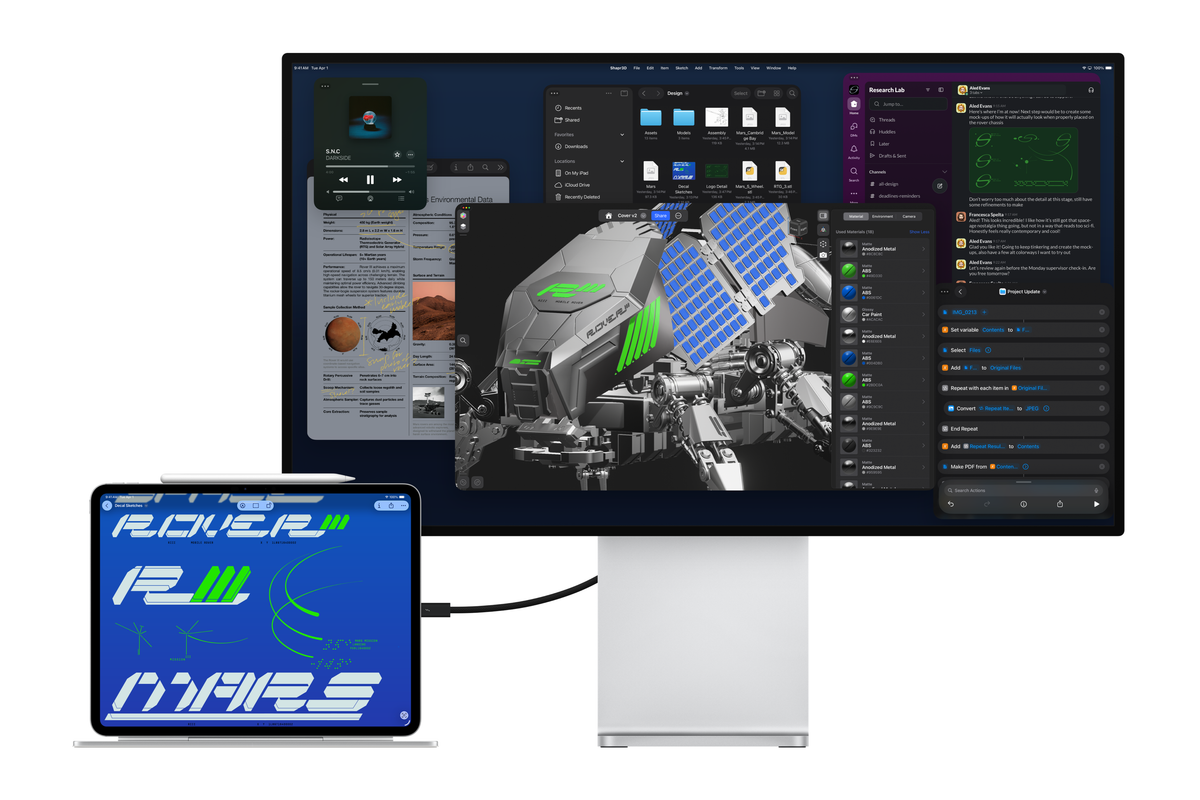
iPad Pro is powerful enough to drive an external monitor with up to 6K resolution. It also supports 4K monitor with a refresh-rate of 120Hz — ideal for video editing or gaming
|APPLE PRESS OFFICE
Don't worry — if you don’t want iPad Pro to take the place of a laptop, you can disable these new macOS-like features. During set-up, you can choose to run iPad apps in fullscreen mode by default, continuing the same tried-and-tested iPad experience familiar to millions. You can even change the way that iPadOS 26 handles multitasking on the fly via a toggle in Control Centre.
Thankfully, the extra oomph squeezed into the M5 hasn’t come at the expense of battery life.
Apple promises 10 hours of surfing the web on Wi‑Fi or watching video, but that seems conservative. Working across multiple documents in IA Writer, switching constantly between Safari windows, and streaming playlists in the background for four-and-a-half hours used just 40% of the battery.
Charging is handled via USB-C, so there’s no need to pack multiple chargers or cables when heading on holiday with an iPad, iPhone, Nintendo Switch, Kindle, and other gadgets for the family. This new generation can refill its tank to 50% in under 30 minutes, which is helpful.
And it’s not just the M5 and charging that’s speedier this time around, with the storage used in this new iPad Pro lineup boasting 2x faster read and write speeds. That means everything from opening large projects or saving documents will be speedier than earlier models.
Apple offers its new M5-fuelled iPad Pro in either 256GB, 512GB, 1TB, or 2TB storage configurations. The last two ship with 16GB of RAM, while the more affordable models offer 12GB.
Unlocking the iPad Pro is still handled via Face ID, which also verifies your identity to open secure banking apps and authorise Apple Pay when shopping online. The 12MP front-facing camera is equipped with the Centre Stage feature found on the newest iPhone models. It intelligently keeps you in the frame during video calls, even as you move around or new people join you.
On the back, the rear-facing 12-megapixel camera can be used for photos, videos, document scanning, and even Augmented Reality (AR) apps and games that bring digital elements into the real world.
What We Don’t Love
If there’s one thing that’ll stop you from replacing your laptop with an iPad Pro, it’s the price tag.
If you want the 12.9-inch model (£1,299) with a Magic Keyboard (£349), you’ll need to spend a minimum of £1,648. For that, you'll be treated to 256GB of that faster storage.
You'll need to spend an extra £129 for the Apple Pencil Pro.
For comparison, the newly-announced 14-inch MacBook Pro is available with the same M5 system-on-a-chip, coupled with 16GB of RAM and 512GB of SSD storage, for £1,599.
Sure, you’ll miss out on Apple Pencil support, a touchscreen, and that tandem OLED screen, but that’s still quite a saving compared to the £1,848 required for the same 512GB configuration on iPad Pro.
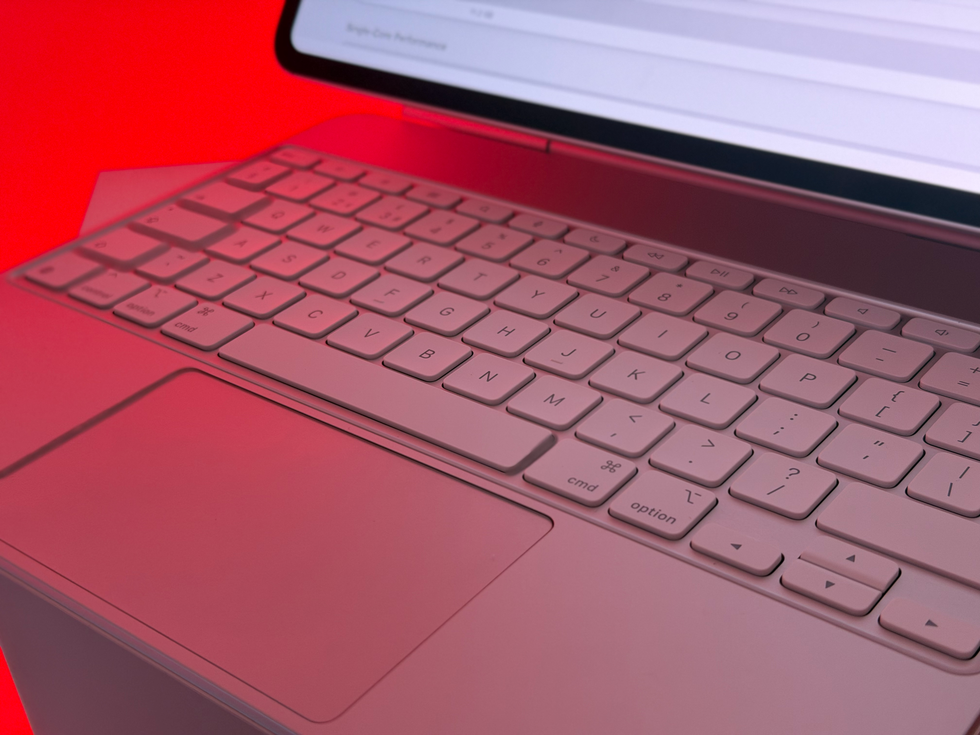
Typing on the Magic Keyboard, which is available in Black or White to either colour-match or add contrast to the Space Grey and Silver colourways available on the new iPad Pro, is an utter joy
|GB NEWS
The Magic Keyboard is one of the best-looking keyboard cases for the iPad, with its stunning floating cantilever design that suspends the tablet above the chiclet keys. Typing is an absolute joy and rivals any recent MacBook model. Unlike some accessories, there's no need to worry about diving into the Bluetooth menu in Settings to pair the Magic Keyboard — magnets snap the iPad Pro into place, and it'll immediately recognise that a keyboard and trackpad are connected, with a cursor appearing on-screen.
Our only gripe with this accessory is that it can be a little bit of a faff to open. Unlike the MacBook Air, which has been engineered so that its hinge and weight distribution allow you to open it with one finger — without the base lifting away from the suface it's resting on — the same isn't true of the iPad Pro.
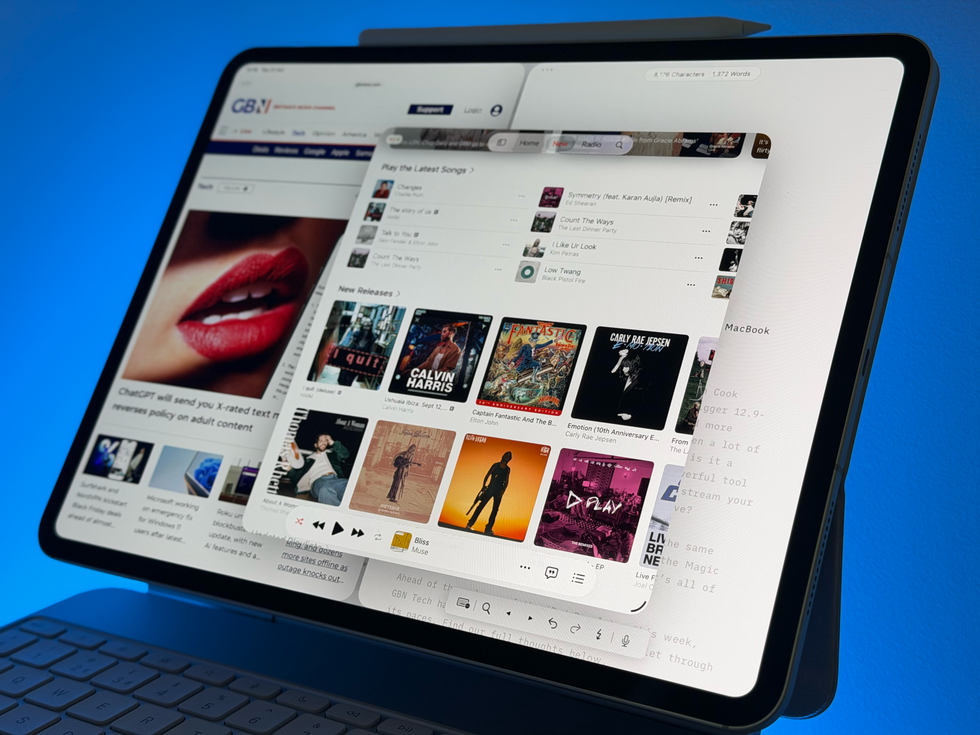
There's no limit on the number of windowed applications that you can launch simultaneously on the iPad Pro (M5), offering a laptop-like experience on this oh-so thin tablet
|GB NEWS
Final Verdict
iPad Pro is astonishing.
Hidden inside the unassuming, ultra-slim 5.1mm frame – yes, iPad Pro keeps the accolade of the thinnest device ever to leave Apple's R&D department, despite the recent launch of iPhone Air — is a powerhouse system-on-a-chip that’s faster than anything you can currently buy in MacBook Air.
In fact, it's often speedier than the silicon you'd find inside a MacBook Pro with a price tag north of £2,000 released just a few years earlier.
Combined with the game-changing iPadOS 26 and the freedom to endlessly move and resize an unlimited number of iPad apps (just like macOS), iPad Pro can easily replace a traditional laptop.
In fact, it might be better.
Unlike even the priciest MacBook models, iPad Pro is available with 5G mobile signal support, so you can stay connected even when you’re away from Wi-Fi. Not only that, but once you've finished working, iPad Pro can unsnap from the Magic Keyboard — leaving you with this breathtakingly thin slate in your hands to watch your next boxset binge, browse the web, doodle in ProCreate, or edit a 4K video project.
Whether you're slouched on the sofa, in the office, or on a flight, it's the combination of that slim form-factor and the eye-wateringly powerful M5 that makes iPad Pro the perfect companion. It's not cheap, but if you take the plunge, you'll never take it out of your bag.
Order the brand-new iPad Pro (M5) on Amazon

Also available with a larger 12.9-inch Ultra Retina XDR display for £1,299, this new iPad Pro adds a supercharged new M5 system-on-a-chip to the same breathtakingly thin case unveiled last year. At 5.1mm for the 12.9" tablet, this still holds the crown as the thinnest device to ever be released by Apple — beating the iPod nano and the headline-grabbing iPhone Air that launched last month
[stars-4.5]
iPad Pro (M5)
$999
Our Standards: The GB News Editorial Charter
More From GB News










